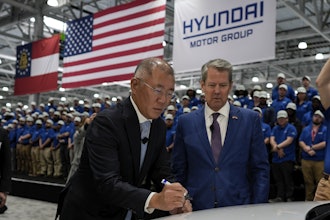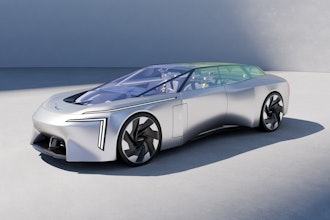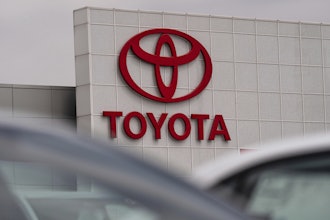When it comes to the automotive industry, innovation isn’t anything new. A rich history of ideation – including Alfred P. Sloan Jr.’s commitment to new concepts such as automotive styling and Henry Ford’s introduction of the assembly line – defines an industry in which change occurs more often than not.
The latest in a long series of new developments is poised to be delivered by Industry 4.0, or the fourth industrial revolution. Made popular in the manufacturing arena, Industry 4.0 is ready to reshape the automotive industry. From smaller equipment to a more dynamic supply chain, see what changes are on the horizon.
More Efficient Equipment
Dreams of driverless vehicles are decades old. But with the help of Industry 4.0, those fantasies are turning into reality. Automotive giants such as Ford and GM plan on leveraging Industry 4.0 to deliver cars without gas pedals or steering wheels as early as 2019. Although time will tell whether such proclamations come to fruition, there’s no denying the difference Industry 4.0 is already making in the automotive supply chain.
Among the most immediate impacts of Industry 4.0 is an uptick in automation. Rather than requiring workers to shadow a piece of equipment throughout their shift, suppliers can dedicate their time toward more immediate needs. If an emergency arises, for example, workers can have confidence that automated equipment will get the job done.
In the same way worker efficiency is expected to increase with Industry 4.0, equipment itself may become easier to implement. The mining industry has made use of automation from Industry 4.0 by reimagining what’s necessary. In fact, IoT-controlled vehicles are being designed without a cockpit to free up space. The best part? No dip in performance. Automotive manufacturers looking to maximize their factory floor should consider making similar use of automation. By weeding out what’s no longer necessary, manufacturers stand to drive greater efficiency.
Greater Connectivity
Businesses are always looking to back their decisions with data. According to research from Forrester, 74 percent of firms want to be data driven. Just 29 percent, however, know how to turn analytics into action. That’s where Industry 4.0 can make its presence felt.
By enhancing connectivity between every part of the supply chain, Industry 4.0 will hasten the transition from a linear structure to one that’s more responsive. Instead of operating independently, everyone along the supply chain can adapt based on customer demand. Say, for example, an in-car infotainment system is selling more quickly than expected. Stakeholders can leverage that information to modify production plans on the fly and ultimately increase efficiency.
Better yet, time to market also figures to decrease. Access to customer engagement data at every point in the supply chain helps eliminate some of the mystery around new features. Rather than guessing what sales might look like months in advance, stakeholders can use the data made available through a dynamic supply chain to determine which infotainment systems are in high demand and which should hit the shelf. Options that are no longer relevant can be substituted throughout the supply chain in favor of those that are selling faster.
Lower Production Costs
From dashboard selections to the steering wheel, consumers have come to expect full control over what ends up in their vehicles. While it may seem like the norm, this era of customized cars is still evolving. For much of the automotive industry’s early history, there haven’t been too many options on the table. Just take a look at Ford’s Model T. One engine type and color was all that customers could choose from. While customization is bound to increase customer satisfaction, greater costs may come with it.
To meet the needs of each customer without blowing past their budget, stakeholders throughout the automotive supply chain can leverage Industry 4.0. Greater insight into the most popular combination of features makes it easier to allocate resources accordingly. If, for example, a new navigation system along with a specific set of wheels see a significant spike in sales, stakeholders can spend more time and money on keeping those features in stock rather than developing other selections. In the event that a customer wishes to purchase a feature that doesn’t happen to be among the top sellers, Industry 4.0 technologies like 3D printing can slash production costs.
With more distribution partners on their way, competition in the automotive industry will continue to grow. Suppliers can stand out from the crowd by turning their attention toward customization options that consumers want. Instead of spending thousands of dollars on a wide range of selections, suppliers should focus their production efforts on options that matter most. As spending decreases, so may prices.
Change is coming to the automotive supply chain – and Industry 4.0 is a big reason why. Stay one step ahead of the competition by keeping an eye out for smaller, more efficient equipment, a dynamic supply chain structure and increased savings. All of which Industry 4.0 is set to deliver to the automotive supply chain.
George Whittier is the chief operating officer at Morey.























